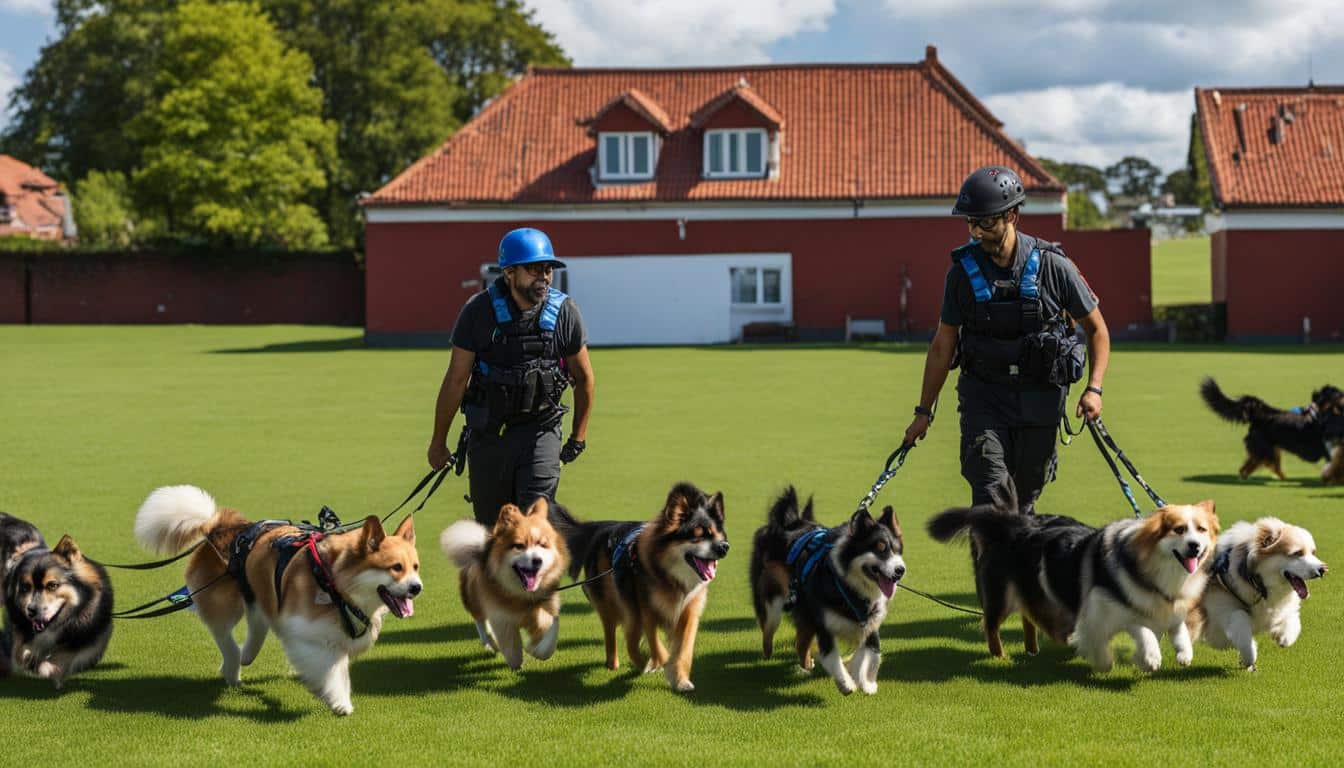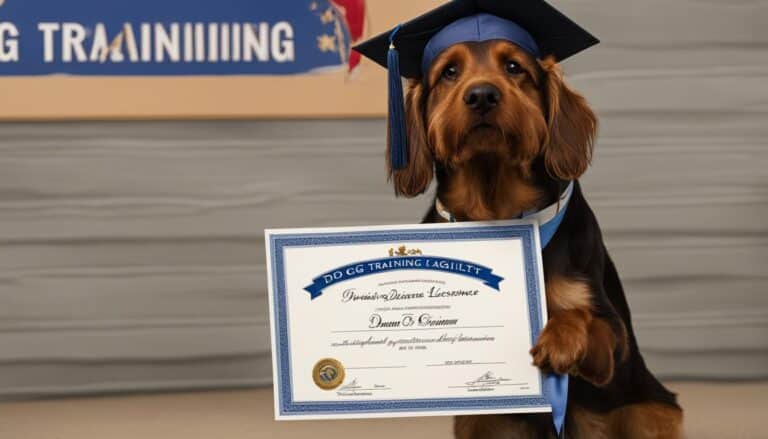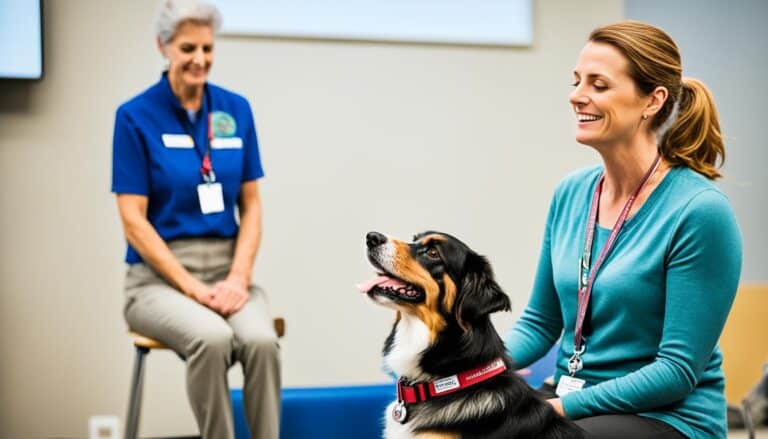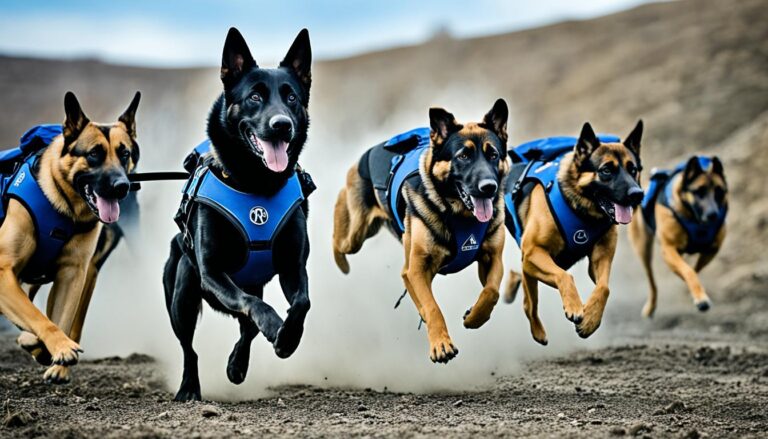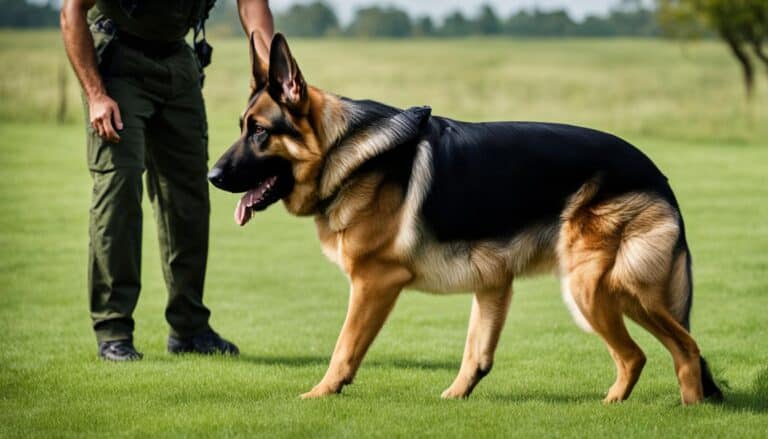Where Are Official Seeing Eye Dogs Trained?
Imagine navigating through life without the gift of sight—a world of darkness that surrounds you. Simple tasks become daunting challenges, and everyday activities require assistance and support. Now, picture a loyal companion by your side, guiding you through the maze of obstacles with unwavering dedication and unconditional love. This is the remarkable role of an official seeing eye dog.
Official seeing eye dogs are meticulously trained to provide invaluable assistance to the visually impaired, enabling them to gain independence and explore the world with newfound confidence. But have you ever wondered where these extraordinary animals receive their training? Let’s delve into the world of guide dog schools and training centers that lay the foundation for their life-changing journeys.
These specialized institutions, such as The Seeing Eye, have dedicated themselves to shaping these incredible beings into skilled and reliable guides. From basic obedience to navigating bustling streets and complex intersections, the training process is extensive and thorough, ensuring that these dogs are prepared for their vital role.
Join us as we explore the training process, the bond between dogs and their instructors, the significance of intelligent disobedience, and the pivotal role guide dogs play in navigating their environment. We’ll also delve into the working life and retirement of these awe-inspiring animals, the cost of owning a Seeing Eye dog, and the crucial funding and support necessary to continue this impactful mission.
So, come with us on this fascinating journey, as we uncover the places where official seeing eye dogs are trained, the guide dog schools that shape their futures, and the hope and independence they bring to the lives of the visually impaired.
The Seeing Eye: A Pioneering Institution for Guide Dog Training
The Seeing Eye is one of the most renowned organizations for training official seeing eye dogs. This institution has been instrumental in the development of guide dog training methods and has a long history of providing highly skilled dogs to visually impaired individuals.
At The Seeing Eye, their focus is on breeding and training German shepherds, Labrador retrievers, golden retrievers, and Labrador Golden crosses – breeds known for their intelligence, loyalty, and suitability for guide work.
With a rigorous training program, The Seeing Eye ensures that their dogs are well-prepared to handle the challenges of guiding their handlers. The training includes teaching the dogs to navigate obstacles, alert their owners to potential hazards, and display intelligent disobedience when necessary.
The dedicated team at The Seeing Eye follows a structured process, combining positive reinforcement, clicker training, and real-world simulations to prepare the dogs for their important role. Each dog is given individualized attention and training to meet their specific needs.
The Seeing Eye’s commitment to excellence and their pioneering approach to guide dog training have made them a trusted source for trained guide dogs, with a longstanding reputation in the industry.
Next, we will explore the detailed training process at The Seeing Eye, shedding light on the techniques and steps involved in transforming these remarkable dogs into reliable and capable companions for the visually impaired.
Training Process at The Seeing Eye
The training process at The Seeing Eye, one of the most accredited guide dog schools, is a comprehensive program designed to prepare official seeing eye dogs for their important role in assisting the visually impaired. When the puppies are returned to The Seeing Eye by their puppy raisers at around 13 to 19 months old, the training journey begins.
First, the dogs undergo health screenings, including spaying or neutering and dental cleaning, to ensure they are in optimal health for guide work. Once cleared, each dog is assigned to a dedicated Seeing Eye instructor for a four-month training period. This phase of training begins with the basics, which are taught on The Seeing Eye campus, where the dogs are introduced to essential skills and commands.
After acquiring a solid foundation, the training progresses to real-world settings, such as the streets of Morristown and even New York City. This hands-on experience allows the dogs to apply their learned skills in navigating various environments under the supervision of their instructors. The goal is to ensure that the dogs can confidently and effectively guide their handlers through different scenarios they may encounter in their everyday lives.
During the training process, a combination of repetition, praise, and clicker training is used to reinforce desired behaviors and commands. This positive reinforcement approach helps the dogs associate their actions with rewards, encouraging them to perform their guiding tasks with enthusiasm and dedication.
In addition to the practical training, The Seeing Eye instructors also conduct blindfolded walks to test the dogs’ abilities. This exercise simulates the experience of blindness and evaluates how well the dogs can navigate without visual cues. It ensures that the dogs are fully prepared to serve as official seeing eye dogs, focusing on their heightened senses and ability to rely on verbal commands from their handlers.
The training process at The Seeing Eye is rigorous and comprehensive, combining theory with real-world practice. It equips the dogs with the necessary skills and behaviors to fulfill their role as trusted companions and guides for visually impaired individuals.
The Bond between Dogs and Instructors
The bond between trained guide dogs and their instructors is a crucial aspect of the training process. During the four-month training period, a strong relationship is formed between the dogs and their instructors. The instructors take great care in ensuring that the dogs enjoy their job and form a deep bond with their handlers. This bond is essential for effective and safe guiding. The instructors work with a string of approximately eight to ten dogs throughout the training cycle, providing individualized attention and guidance.
- The dedicated instructors spend countless hours working closely with the dogs, building trust and understanding.
- They use positive reinforcement techniques to encourage and reward desired behaviors.
- Through mutual respect and patience, the bond between the guide dog and instructor strengthens, ensuring a successful partnership.
- This strong connection allows for effective communication between the dog and its handler.
Service dog schools like The Seeing Eye recognize the importance of this bond and place significant emphasis on the relationship between dogs and instructors throughout the training process.
Intelligent Disobedience and Traffic Training
One of the distinctive aspects of the training at The Seeing Eye, one of the leading seeing eye dog organizations, is the emphasis on intelligent disobedience. Official seeing eye dogs are trained to disobey commands that could potentially endanger their handlers. For example, they are taught not to cross against traffic or step off a vacant subway platform, ensuring safety in busy urban environments.
Through comprehensive seeing eye dog training programs offered by guide dog schools like The Seeing Eye, these extraordinary dogs are equipped with the skills to navigate street crossings effectively. They learn to detect turning vehicles and obey traffic signals, ensuring the safety of their visually impaired handlers.
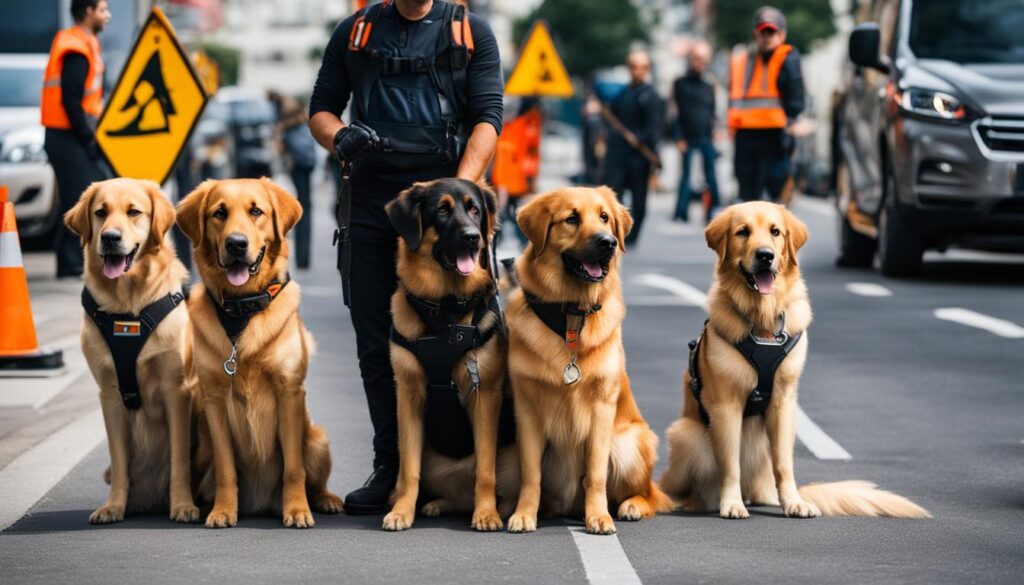
Guide dog schools, including The Seeing Eye, place great importance on traffic training for official seeing eye dogs. The rigorous program ensures that the dogs are highly competent in guiding their owners through busy intersections and other challenging traffic situations. This specialized training is a vital part of preparing these remarkable dogs for their essential role in assisting the visually impaired.
The Role of Guide Dogs in Navigating the Environment
Official seeing eye dogs play a vital role in helping visually impaired individuals navigate their surroundings with confidence and independence. Trained in specialized guide dog training centers and service dog schools, these remarkable animals are equipped with the skills and instincts necessary to guide their handlers through various environments.
Guide dogs are taught to guide their handlers around obstacles, both on the ground and overhead, ensuring their safety while traversing different locations. Whether it’s avoiding potholes, curbs, or low-hanging branches, these intelligent animals intuitively lead their blind owners on the safest path possible.
Additionally, guide dogs are trained to recognize changes in elevation, such as stairs or ramps, and alert their handlers to these potential tripping hazards. This awareness helps prevent accidents and allows the visually impaired individual to navigate with ease and confidence.
One of the remarkable aspects of guide dog training is the concept of “intelligent disobedience.” This means that guide dogs are capable of disregarding commands from their handlers if they perceive a potential danger. For example, if a blind individual commands their guide dog to cross a busy intersection, but the dog detects oncoming traffic, they will exhibit intelligent disobedience by refusing the command, ensuring the safety of their handler.
Using a combination of specific commands, such as “forward,” “right,” and “left,” guide dogs provide precise directions to their handlers, allowing them to navigate through various locations with ease. These commands, reinforced through extensive training, create a bond of trust and understanding between the guide dog and their owner.
Thanks to the exceptional skills and training provided by guide dog training centers and service dog schools, visually impaired individuals can rely on their guide dogs to navigate the environment confidently, proving that these remarkable animals truly are man’s best friend.
Working Life and Retirements of Seeing Eye Dogs
The average working life of a Seeing Eye dog is approximately 7 to 8 years, with some dogs working well into their 10s or 11s. These highly trained dogs dedicate their years to assisting visually impaired individuals, providing invaluable support and companionship.
When a Seeing Eye dog reaches retirement age or is no longer able to work, there are several options for their future. They may be kept as beloved pets by their handlers, who have often formed strong bonds with them throughout their working years. This allows the dogs to enjoy a well-deserved retirement in a familiar and loving environment.
Alternatively, retired Seeing Eye dogs may be given to a friend or relative as a pet. This ensures that the dogs continue to receive the care and attention they deserve, while bringing joy and support to a new home.
If the handler or their network of friends and family are unable to adopt the retired dog, the dog can be returned to the Seeing Eye organization. The Seeing Eye operates a dog adoption program, where retired dogs are carefully matched with new families who can provide them with a comfortable and fulfilling life. This program ensures that retired Seeing Eye dogs continue to receive the care they need and deserve, even after their years of service.
Retirement for Seeing Eye dogs is a well-planned and managed process, aimed at prioritizing their well-being and quality of life. These dogs have given so much to their handlers, and their retirement ensures that they are rewarded with the love and care they need in their golden years.
The Cost of Having a Seeing Eye Dog
Acquiring a Seeing Eye dog involves a cost for visually impaired individuals who wish to have a guide dog. At The Seeing Eye, one of the prominent seeing eye dog organizations, a fee structure is in place to ensure that the program remains accessible and sustainable.
For the first visit to The Seeing Eye, there is a fee of $150. This fee covers various aspects, including the cost of the dog, initial equipment, training, room and board during the training period, transportation, and lifetime follow-up services. It encompasses all the necessary resources to provide a well-trained guide dog to the visually impaired individual.
After the initial visit, subsequent visits require a fee of $50. Despite the cost, The Seeing Eye strives to ensure that financial constraints do not hinder anyone from acquiring a Seeing Eye dog. They have various financial assistance programs in place to help individuals who may need support.
The cost incurred for having a Seeing Eye dog goes towards the training and care of the dogs, as well as the ongoing support provided by the organization. It plays a crucial role in maintaining the high standards and quality of the guide dogs trained at The Seeing Eye and other guide dog schools.

By charging a fee for their services, organizations like The Seeing Eye can continue their important work of breeding and training guide dogs, ensuring that visually impaired individuals can have access to highly trained and reliable companions to assist them in their daily lives.
Funding and Support for Seeing Eye Dogs
The Seeing Eye, like many other seeing eye dog organizations and guide dog schools, relies on funding and support from various sources to continue their important work. The organization receives no government funding and instead relies on the generosity of individuals, bequests, and gifts from foundations.
You can make a difference by contributing to The Seeing Eye’s mission through donations. Your support plays a crucial role in enabling the organization to continue breeding and training official seeing eye dogs for those in need.
Ways to Support The Seeing Eye:
- Make a donation: Every contribution, no matter the size, helps The Seeing Eye continue their vital work. Donations can be made online through the organization’s website.
- Participate in fundraising events: The Seeing Eye organizes various events throughout the year to raise funds and awareness. Consider taking part in these events or supporting them in any way you can.
- Spread the word: Share information about The Seeing Eye and guide dog programs with your friends, family, and community. Help raise awareness about the organization’s invaluable services.
Why Your Support Matters:
Your support allows The Seeing Eye to provide a life-changing opportunity for visually impaired individuals. With your help, they can continue to train and match trained guide dogs with those in need, ensuring greater independence and mobility for the visually impaired community.
By supporting The Seeing Eye, you are making a difference in the lives of those who rely on official seeing eye dogs to navigate the world with confidence.
Rights and Legal Information for Guide Dog Users
As a guide dog user in the United States, you have certain rights and legal protections. The Americans with Disabilities Act (ADA) and laws in all 50 states, as well as the provinces of Canada, ensure that you have access to public places with your official seeing eye dog. This includes public transportation, restaurants, stores, and other establishments.
Official seeing eye dogs are trained to behave properly and assist you in navigating these public spaces. They are highly skilled in guiding you safely through various environments. It is important for everyone to understand and respect the rights of guide dog users, as it plays a vital role in creating an inclusive and supportive environment.
Guide dog schools, such as The Seeing Eye, play a significant role in training these remarkable animals. They provide comprehensive programs to prepare the dogs for their important role in assisting the visually impaired. By supporting these guide dog schools, you contribute to the continuation of their work in breeding and training official seeing eye dogs.
